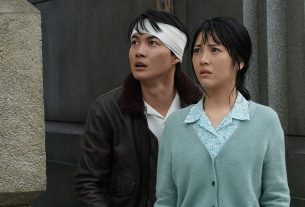
Genealogy has fascinated me since I was a kid, ever since I was given an assignment in the eighth grade to go back a few generations. I realize I’m at the point, years later, that gushing over a line of Basque ancestors to most of my family is going to get some polite responses and knowing smiles. I’m that person. I’m aware. It’s likely that the majority of Americans out there really have no desire to wade through archives and discover the names and families associated with their existence, but I find it no end of fun. I’m totally okay with that. Maybe my kids will thank me someday.
One of the first things I did when we got an internet connection, in my teens, was to troll the web for ancestors. Now, before I even get into that, you’ve got to know that I’m not exactly Anglo-Saxon. Not in any sense of the term. Unless you count my Scandinavian roots, which go back to Sweden (and possibly Norway) or my ninth great-grandfather, Laurent Granger, who was from England (but that’s not exactly a close relation–especially since he was of Norman vintage, anyway), I’m a mishmash of anything but English, Scottish, Irish, or Welsh. There’s the Eastern European connection, including Lithuanian and Ukrainian Jews who found their way to New York and Boston before the first World War; there’s the First Nation connection on my mom’s side, mixed with French, German (Schmouth is the surname, which continues to baffle me), and as I mentioned before, even some Basque. There has never been an easy genealogical route, save my maternal great-grandfather’s side, the Paquin family, who go back to France to the 17th century with ease.
It’s the black holes that get me. By the mid-2000s, I’d traced most of my Swedish paternal great-grandfather’s (Albinson) family back to the home land thanks to another genealogical geek cousin along with the Paquin family (which is well documented online). Thankfully the folks at Ancestry.com hooked me up with a membership, and over the last year I’ve been delving now and again into the depths of my curious family history.
I’m going to be writing a series of posts on the more intriguing finds, but wanted to talk a little about how Ancestry.com works, what I love, and what I’d love to see improved.
First: It’s a huge database. And I mean huge. Even a few cursory searches give you a feeling of its immense complexity. If you’re a total newbie to genealogy, I suggest doing a little family research before getting involved. The more details you can start with (birth dates, death dates, family residences, etc.) the more likely you’ll find the right path rather than end up down a false path. Even with fairly straightforward ancestry, like my husband’s, you’ve got make sure not to trip up early because you can make a mire of things later.
And that’s the first challenge: pathways. While it’s tempting to stay the easy course, i.e., following other peoples’ family trees and incorporating them in your own, I recommend doing the legwork of digging through the archives on your own, especially when names are similar. There are many false pathways, and plenty of sloppy research (also lots of exported files which end up with CAPS EVERYWHERE and makes an untidy mess). Also, since many families have repeated names, it’s essential that you double check birth dates and death dates. What I said about sloppy research? Yeah. I’ve found quite a few people younger than the children they’ve supposedly fathered… by centuries, even.
I’m lucky when it comes to my French-Canadian ancestry, because the Drouin collection is amazing. I also know how to read French, which has helped immensely. I’ve been able to make connections on my obscure family side (the one with the German, Basque, and First Nation) that I never thought possible. But not all the archives are well-scanned or even, in some cases, legible. Plus, names seem to change over time. And comparing a census to a birth certificate to a baptism to a marriage certificate to a death certificate is likely to make your head spin. In that case, looking at the dates can help keep things clearer. Also, there’s a language barrier. I can’t speak or read Swedish, and while there are some indications of documentation on my maternal grandmother’s side, I can’t access them (scanned documents don’t translate).
On my wish list for Ancestry.com would be a few algorithms. One: Suss out those impossible dates. If the father is younger than the son, get an error notification that you might want to check it again. Secondly, a filter to get rid of all caps. Seriously, I spent more time growling about that than anything. Thirdly? Oh, yes. I call it the Bayonne New Jersey effect. Often people are sloppy when putting in the places their families came from. In my case, Bayonne, New Jersey is often confused with Bayonne, France. I’m pretty sure that my relatives weren’t living in New Jersey in the 1700s. Also, it would be great to have social rating. There are some absolutely pristine researchers out there, and I’d love to flag them for future researchers. Yes, follow this person! They’re awesome.
Over all, however, I’m thrilled with how Ancestry.com works. I’ve been able to explore almost every branch of my family, save a few. And those are the ones that perplex me the most. I’ll get into those later, and how heartbreaking it’s been (particularly with my Jewish ancestry).
But, if you’re stuck, like me, you can always hire experts. Ancestry.com can hook you up with folks who do this for a living and might help you clear up those roadblocks on your journey.
Stay tuned for part two, in which I go to Canada. In my mind, anyway.



